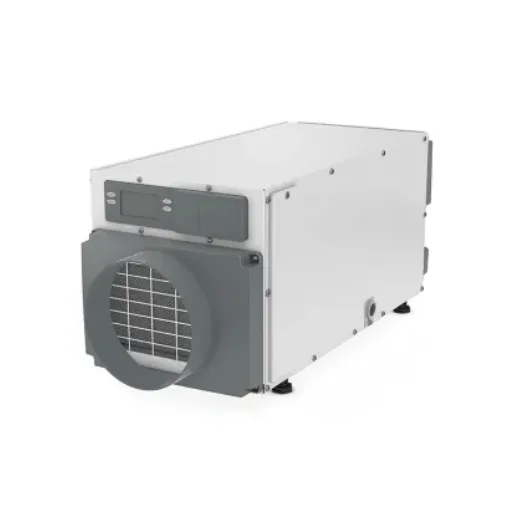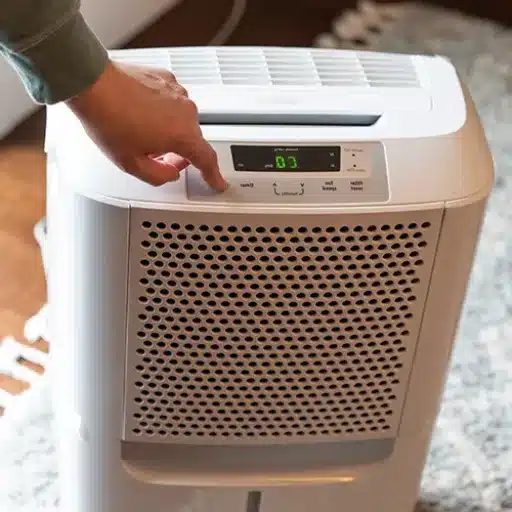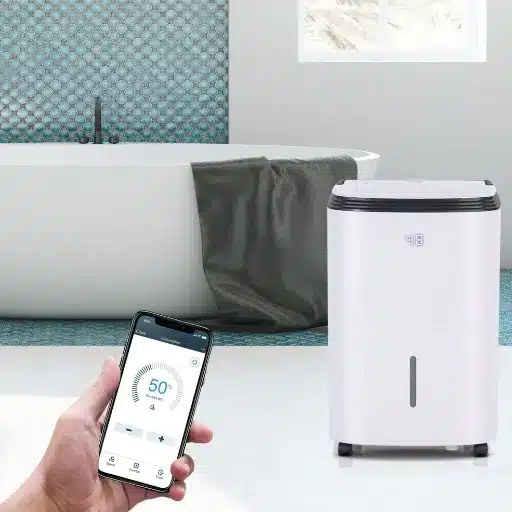Selecting a suitable small dehumidifier for the bedroom is crucial in nurturing a pleasant and healthy lifestyle. Problems such as dampness, unsightly odor, and mold can disrupt sleep and lead to numerous health problems due to excess moisture in the air. It can be challenging to settle on the right device considering the countless options in the market but this guide aims to help. In this article, we will discuss some of the best small dehumidifiers designed for the bedroom. No matter the case, whether it is too much humidity, quietness, or low price that concerns you, this article aims to air quality and comfort issues in the bedroom.
How to Choose the Best Small Dehumidifier for a Small Room?
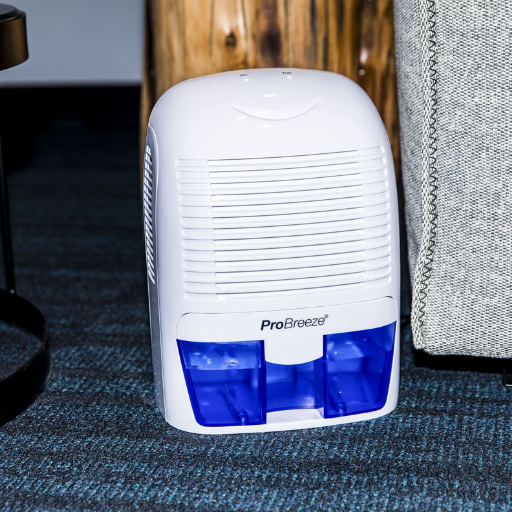
Factors to consider to successfully choose the best small dehumidifier for your small room includes:
Room Size Compatibility: Check the area coverage of the dehumidifier. Its coverage should accommodate your space size. Most small dehumidifiers work best in spaces of 100 to 400 square feet.
Water Tank Capacity: Select a model with a tank that best suits your servicing needs for convenience. Larger tanks reduce maintenance considerably but require more space.
Noise Level: For bedroom use, quiet units that operate below 40 decibels should be prioritized. This will ensure no disturbances while sleeping.
Energy Efficiency: An inexpensive dehumidifier will most likely have fewer features. Such units may also be lack efficiency rating. If you want to save on electricity, look for an energy efficient unit, which is usually marked by an Energy Star certification.
Ease of Use: Automatic shut off, simple controls, and water level indicators enhance servicing convenience and ease of use.
Flexibility: Humidity control settings, timers, and even a continuous drain feature can better tailor the unit to your use, adding functionality and meeting your needs.
All these combined carefully, will allow you to select a small dehumidifier that will greatly improve air quality and comfort in your room.
What Features Should I Look for in a Dehumidifier?
For optimal performance and ease of use, selecting a dehumidifier requires thoughtful consideration of several features. The following insights are tailored to assist your choices:
Capacity: Dehumidifier capacity ratings usually vary in pints per day. Both small and large capacity appliances are available. A small capacity dehumidifier (20-30 pints per day) can handle moisture problems and mild-sized rooms, while larger units (50-70 pints per day) are ideal for basements or large areas with high amounts of moisture.
Energy Efficiency: look for units with an Energy Star certificate since these models are known to use a lower amount of electricity while maintaining effective humidity control. Energy Star dehumidifiers save you 15% of energy costs when compared to non-certified models, which also makes them environmentally friendly.
Noise Level: Noise can be a critical deciding factor when considering where to set up the dehumidifier. In case you want to use the appliance in the living room or bedroom, consider the decibel rating. Units below 50 decibels are quiet and considered suitable for noise sensitive areas.
Advanced Control Features and Sensors: More sophisticated units may include a humidistat or a digital display, allowing for setting and monitoring of moisture levels (usually between 30-50% for greatest comfort). Automatic sensors can modulate the operation of the device so that the desired humidity levels are maintained with no additional work required.
Draining Methods: The presence of multiple ways to remove the tank from the unit or connect a hose for continuous drainage increases the convenience of the dehumidifier. In cases where the unit is not monitored, constant drainage could be useful to reduce emptying.
Mobility: Check for caster wheels or side handles that increase ease of movement between rooms for the unit’s top or bottom placed handles, and a compact form. Such portable models can adjust to varying moisture levels in different locations in the house.
Air Filters: Dust and allergens can be trapped by the functioning dehumidifier with its replaceable or washable air filters fitted to some dehumidifiers, consequently improving air quality along with reducing humidity levels.
Dehumidifiers’ smart home compatibility allows for remote monitoring and control through Wi-Fi or dedicated mobile applications, making them suitable for centrally controlled households or larger homes. These features cater to busy households, streamlining device management for centralized monitoring.
How Does Room Size Affect My Choice?
The size of the room critically influences the choice of dehumidifier, determining how well humidity can be controlled. Dehumidifiers are usually categorized based on the moisture extraction rate, in pints removed per 24 hours, and adjusting this rate to the recommended area size of the dehumidifier. As an example, a 20-30 pint capacity unit is ideal for small rooms up to 500sqft, like bedrooms or home offices. A dehumidifier with 30-50 pints capacity would suffice for mid-sized rooms 500 to 1,500 square feet. The large areas which exceed 1,500square feet often require units, which would be capable of removing freely 50-70 pints or more of moisture daily.
Furthermore, one must give attention to the climate and other humidity factors as well. For example, a smaller room in a very humid region will potentially need over-sized units. Understanding these factors working together will allow choosing a dehumidifier, which works effectively without unnecessary strain and energy use while extending its lifespan.
Are Energy Star Ratings Important?
Indeed, Energy Star ratings should be evaluated when selecting appliances, including dehumidifiers. Products branded with the Energy Star certification undergo independent testing and verifications that confirm they meet established energy efficiency guidelines without compromising on performance. The Environmental Protection Agency (EPA) data suggests that Energy Star certified dehumidifiers, on average, consume approximately 15% more energy than conventional models. This fact aids in energy consumption and contributes to significant cost savings in the long run.
For instance, a standard dehumidifier operating in a medium-sized room would most likely consume around 600 watts an hour, while an Energy Star rated equivalent would use roughly 500 watts per hour. This is with both appliances providing the same moisture removal capability. Annual savings of approximately $25 to $45 can be achieved with the Energy Star model, depending on usage and local electricity rates, further supporting the proposed claim. Additionally, choosing an Energy Star product helps reduce greenhouse gas emissions and contributes to a more sustainable environment.
Energy efficiency usually accompanies other factors like advanced controls for humidity and fan optimization that improve usability. Installing these certified appliances in your home can change the economic as well as ecological situation, rendering Energy Star certifications highly significant when purchasing a dehumidifier.
What Are the Benefits of Using a Small Dehumidifier in a Bedroom?
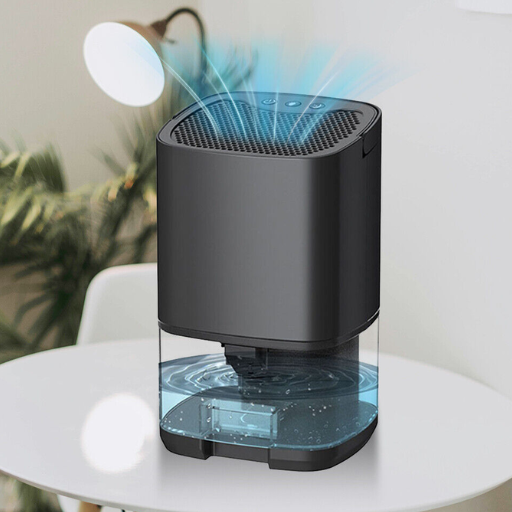
A small dehumidifier in a bedroom offers several key benefits. First, it helps maintain optimal humidity levels, reducing the risk of mold growth and improving overall air quality. This can alleviate allergies and respiratory issues caused by excess moisture. Additionally, it creates a more comfortable sleeping environment by preventing dampness and minimizing odors often associated with high humidity. Small dehumidifiers are also energy-efficient and quiet, making them ideal for use in bedrooms without disrupting sleep or significantly increasing energy consumption.
How Does It Improve Air Quality?
A small dehumidifier plays a critical role in maintaining optimal air quality by reducing excess moisture in the air, which can contribute to various health and environmental problems. High humidity levels create a breeding ground for allergens like mold, dust mites, and bacteria. According to industry data, maintaining indoor humidity between 30-50% can significantly reduce the prevalence of these allergens, leading to a healthier living environment.
By removing excess moisture, dehumidifiers also prevent the proliferation of airborne pollutants that thrive in damp conditions. Research shows that improved control over indoor humidity can decrease the risk of respiratory irritations and chronic conditions like asthma. Additionally, reduced humidity minimizes the development of musty odors and keeps indoor spaces feeling fresher and more breathable.
Advanced models also feature built-in air filtration systems, which capture fine particles such as dust and pet dander while simultaneously regulating moisture levels. These dual functions make small dehumidifiers an effective, comprehensive solution for improving indoor air quality, particularly in enclosed or poorly ventilated areas like basements and bedrooms.
Can It Help with Humidity Control?
Indeed, moisture in the air can be effectively reduced using small dehumidifiers, which aids in humidity control. Experts recommend keeping the indoor humidity level between 30% and 50% to ensure comfort and well-being. Anything above this range can contribute to mold, dust mites, and other allergens, leading to a decline in the indoor air quality. Small dehumidifiers balance these concerns for confined spaces and are able to extract moisture ranging from 10-50 pints per day, depending on the device and room size.
These devices have become even more helpful due to recent technological advancements. Many models, for instance, have added hygrometers to help users track their desired humidity level, making precise maintenance possible. Additionally, energy-efficient designs ensure that modern small dehumidifiers operate with minimal power consumption. As a result, their cost-effectiveness and environmental impact are improved. Such attributes make them effective in controlling desired humidity levels, particularly in moist areas such as basements, bathrooms, and laundry rooms.
Does It Reduce Excess Moisture?
Yes, small dehumidifiers are highly efficient in reducing excess moisture from indoor spaces. These devices work by drawing in humid air, which passes over cooled coils where moisture condenses and collects in a reservoir. Research indicates that, depending on the capacity and model, small dehumidifiers can remove up to 20-50 pints of moisture per day, effectively preventing issues such as mold growth, mildew, and dust mites in humid environments.
For example, compact models designed for rooms up to 200 square feet can maintain humidity levels below 50%, which is the recommended range for healthy indoor air quality. Advanced features such as auto-defrost and continuous drainage make them even more efficient for long-term use. Furthermore, their portability ensures they can be easily moved to problem areas, targeting high-moisture zones with precision. These benefits highlight the capability of small dehumidifiers to significantly improve indoor air quality and safeguard living spaces from the adverse effects of elevated humidity.
Which Portable Dehumidifier Models Are Best Overall?
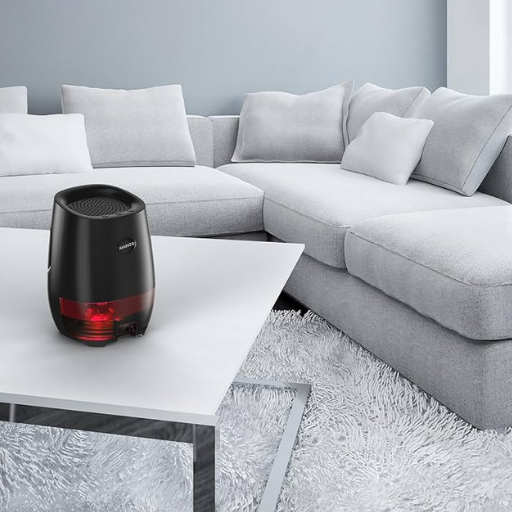
When it comes to the best overall portable dehumidifiers, a few models stand out due to their performance, reliability, and user-friendly features:
- hOmeLabs 1,500 Sq. Ft Energy Star Dehumidifier
Ideal for medium-sized spaces, this model is energy-efficient and effectively reduces humidity while being easy to maintain.
- Vremi 22 Pint Energy Star Dehumidifier
Known for its compact design and quiet operation, this dehumidifier works well in bedrooms or smaller living spaces.
- Frigidaire FFAP5033W1 50-Pint with Pump
Equipped with a built-in pump for continuous drainage, it’s perfect for larger areas and those needing hassle-free moisture control.
- TOSOT 20 Pint Dehumidifier with Energy Star Certification
Stylish and functional, this option combines energy efficiency with powerful humidity reduction, making it great for modern homes.
These models are consistently recommended for their efficiency, durability, and accessibility, catering to various room sizes and needs.
What Are the Features of the Eva-Dry Mini Dehumidifier?
The Eva-Dry Mini Dehumidifier is very easy to use due to its compact size and lightweight. Because it works silently, it can be placed concealed in small areas such as closets or bathrooms, and even RVs. This dehumidifier is energy efficient because its silica gel beads which absorb moisture do not need any power to recharge. The fact that it is spill- and mess-free is another one of its advantages, decorating it with durability and convenience.
Why Is the hOmeLabs Dehumidifier a Top Choice?
The hOmeLabs Dehumidifier stands out as a top choice due to its powerful performance, user-friendly features, and modern design. With an impressive moisture-removal capacity of up to 50 pints per day (depending on your selected model), it is perfect for large spaces like basements, living rooms, or offices. Equipped with a built-in pump in some models, it offers continuous drainage, saving time and effort.
What sets the hOmeLabs Dehumidifier apart is its intelligent humidity control system. The unit features an easy-to-use digital control panel that allows users to set their desired humidity levels, monitor real-time conditions, and activate a 24-hour timer for efficient operation. Additionally, it includes a washable filter for improved air quality, ensuring cleaner and fresher indoor spaces.
Certified for energy efficiency, this dehumidifier minimizes electricity consumption without sacrificing performance, making it an environmentally conscious choice. Designed with quiet operation, sleek aesthetics, and mobility in mind, it integrates seamlessly into any home environment. For those looking for a reliable, high-capacity, and well-engineered dehumidifier, hOmeLabs delivers exceptional value.
Is the Waykar Dehumidifier Suitable for Small Spaces?
Yes, the Waykar Dehumidifier is absolutely suitable for small spaces. Its compact design allows it to fit comfortably in smaller rooms, while still delivering powerful moisture control. I’ve found it to be highly effective in maintaining optimal humidity levels in bathrooms, bedrooms, and even closets, making it a versatile option for any space size.
Understanding Dehumidifier Features and Coverage Area
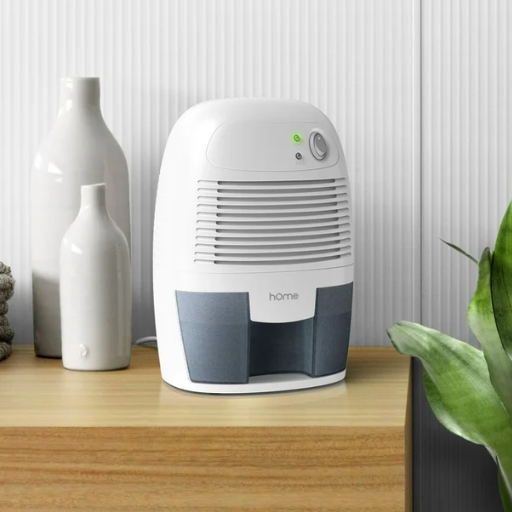
When selecting a dehumidifier, it is essential to consider its features and the area it can cover. Key features to look for include adjustable humidity settings, a user-friendly control panel, and an efficient water tank design. Coverage area is equally important—most dehumidifiers specify the maximum square footage they can handle, ensuring you can choose one that matches the size of your space. For small rooms, a unit designed for up to 200-300 square feet is generally sufficient, while larger spaces may require a more robust model.
What Is the Ideal Coverage Area for a Small Room?
When determining the ideal coverage area for a small room, it’s important to consider both the size of the room and the dehumidifier’s efficiency rating. Small rooms are typically defined as spaces ranging from 100 to 300 square feet. For such spaces, a dehumidifier with a capacity of 20 to 30 pints per day is generally recommended, depending on the level of humidity and airflow within the room.
For example, a 200-square-foot bedroom with moderate humidity can be efficiently managed by a 20-pint model. However, if the room experiences high humidity — such as a basement or bathroom without proper ventilation — upgrading to a 30-pint unit can ensure better moisture control. Many modern dehumidifiers are designed to perform efficiently within their specified coverage range, providing features like adjustable humidity settings and auto-shutoff to maintain optimal air quality.
Always prioritize models with Energy Star certifications for maximum efficiency and reduced energy consumption, and consider the specific requirements of the room when selecting a unit. Understanding these factors ensures your space remains comfortable, healthy, and free of excess moisture.
How Does a Desiccant Dehumidifier Work?
A desiccant dehumidifier operates by utilizing a hygroscopic material, such as silica gel, to absorb moisture from the air. Unlike traditional compressor-based dehumidifiers, desiccant models do not rely on refrigeration systems, making them more effective in low-temperature environments. These devices draw in humid air and pass it through the desiccant material, which captures the moisture. The dehumidified air is then released back into the room, providing a noticeable improvement in air quality.
The moisture-laden desiccant eventually requires regeneration, a process where the collected water is removed to restore its absorbing capacity. This is typically achieved by heating the desiccant, either through an internal heater or an external mechanism, and the extracted moisture is expelled through a vent or reservoir. Modern desiccant dehumidifiers are engineered for energy efficiency and may feature adjustable drying modes, quiet operation, and even advanced air filtration systems.
Data demonstrates that desiccant units perform exceptionally well in environments below 60°F (15°C), where compressor-based models often struggle. They are ideal for use in spaces such as basements, garages, or attics, as well as in commercial and industrial settings where precise moisture control is critical. Additionally, they are lightweight and portable, ensuring convenience for users seeking flexibility in maintaining optimal humidity levels.
What Are the Benefits of a Compressor Based Dehumidifier?
Compressor-based dehumidifiers are an excellent option for managing moisture in very humid environments (normally exceeding 60°F (15°C)), as they efficiently remove large volumes of water vapor from the air. Their operation involves the circulation of warm and moist air over refrigerated coils. The refrigeration lowers the temperature of the coils below the dew point of the air, causing the moisture to condense and be collected on the coils, subsequently reducing the indoor humidity.
One of the primary benefits of the compressor models is the energy savings they provide in hot and humid areas. For example, a lot of modern compressor-based dehumidifiers are actually ENERGY STAR certified, meaning that they use 15% less energy than non-certified units. These customer perks are paired with favorable environmental impacts due to reduced electric consumption. In addition, these devices often provide an enhanced moisture removal capacity, with certain models exceeding an extraction rate of 50-70 pints (23-33 liters) of water per day, depending on the size of the unit and ambient conditions.
In addition, the use of compressor units makes a dehumidifier compressor based dehumidifiers usually have greater durability and require less maintenance. Options like auto-restart, washable filters, and continuous drain further add to their ease of use. Because of their versatility, they can be used in larger areas such as living rooms, offices, and even warehouses. This makes them ideal for long-term moisture control. They offer reliable performance and modern enhancements, reinforcing why compressor-based dehumidifiers have nestled into a dominant role for indoor climate control untangled.
How to Maintain Your Dehumidifier for Optimal Performance?

- Clean the Filter Regularly
Dust and debris can accumulate on the filter, reducing efficiency. Most filters can be rinsed with water or gently cleaned with a vacuum. Refer to the manufacturer’s instructions for specific guidance.
- Empty and Clean the Water Tank
If your dehumidifier has a tank, empty it frequently to prevent overflow and the buildup of mold or bacteria. Wash the tank periodically with mild soap and water to keep it hygienic.
- Check the Coils
Inspect the coils for dust or frost buildup. Keep them clean by wiping gently with a soft cloth, and ensure proper airflow to prevent frosting.
- Maintain Proper Placement
Place the dehumidifier in an area with good air circulation and ensure it’s not too close to walls or furniture, as this may block airflow.
- Inspect the Drainage System
For units with a continuous drain option, check regularly for clogs or leaks in the hose to ensure proper drainage.
- Perform Seasonal Maintenance
If you plan to store the dehumidifier for an extended period, clean and dry all components thoroughly before storage. Cover it to protect against dust.
By following these steps consistently, you can extend the lifespan of your dehumidifier and ensure it performs efficiently for years to come.
How Often Should I Empty the Water Tank?
The frequency of emptying your dehumidifier’s water tank depends on several factors, including the humidity level in your space, the capacity of the water tank, and the operational hours of the dehumidifier. Typically, in areas with high humidity, such as basements or bathrooms, the water tank may need to be emptied every 8 to 12 hours during continuous operation. For smaller-capacity tanks, this can even reduce to every 6 hours in extremely damp conditions. On average, most dehumidifiers are designed to collect between 20 to 70 pints of moisture per day, which means a larger tank or continuous drainage system is more convenient for spaces with significant moisture issues. Monitoring the tank’s fill indicator regularly ensures effective operation and prevents overflow.
Should I Use a Drain Hose for Continuous Drainage?
Using a drain hose for continuous drainage can be an efficient solution for managing the moisture collected by your dehumidifier, especially in spaces with high humidity levels or when frequent emptying of the water tank is impractical. By attaching a drain hose to the unit, you allow the water to flow directly to a nearby drain, sink, or even outdoors, eliminating the need to manually empty the tank.
When setting up continuous drainage, ensure that your dehumidifier is placed on a level surface and that the drain hose slopes downward to prevent any backflow into the tank. Most residential dehumidifiers come with a standard hose connection, compatible with a common garden hose. For enhanced usability, newer models may offer a built-in pump feature that can push water vertically, an ideal option for draining into a sink or higher area when a floor drain is unavailable.
Research indicates that using a drain hose improves efficiency in excessively damp areas like basements and laundry rooms, where dehumidifiers may collect up to 70 pints of water daily. This method not only saves time but also ensures the unit operates at peak performance without interruptions. However, continuous drainage requires regular inspection to prevent clogs or leaks in the hose, ensuring smooth and trouble-free operation.
How Do I Clean and Maintain the Filter?
To ensure good air quality and effective operation of the dehumidifier, its filters should regularly be maintained and cleaned. Depending on the environment and unit usage, most manufacturers suggest that filters should be cleaned every two to three weeks. For safety, first switch off and unplug the dehumidifier. Locate the filter as it is usually located stuck behind the air intake grill and slide it out carefully.
To remove light dust and dirt, use a soft brush or vacuum and its brush head. Also, the filter can be washed under lukewarm water for better cleaning, but it shouldn’t be exposed to hot water as it can damage the material. Make sure that the filter is completely dry before placing it back in the unit. Some filters are also washable in dishwashers, check with the user manual.
Regularly cleaning your air conditioning filters guarantees dust will not build up and block airflow. This results in improved air conditioning efficiency and better indoor air quality since greater amounts of allergens, mold spores, and other air particles can be captured. Studies show that neglecting to clean filters leads to a 15% drop in performance. This figure speaks for itself, regular maintenance is crucial.
Reference Sources
- “The Use of Dehumidifiers in Desiccant Cooling and Dehumidification Systems”3:
- Key Findings: This study focuses on the performance of rotary dehumidifiers in gas-fired open-cycle desiccant cooling systems. It highlights the optimization of regeneration heat supply by adjusting air mass flow rates and wheel rotation speeds. While not directly about small room dehumidifiers, it provides insights into dehumidifier efficiency and control strategies.
- Methodologies: The study uses analytical modeling and compares experimental data to validate findings. It explores control strategies for optimizing cooling loads and regeneration processes.
Frequently Asked Questions (FAQs)
Q: What is the best dehumidifier for high humidity areas in a bedroom?
A: The best dehumidifier for high humidity areas in a bedroom is one that efficiently removes moisture from the air, such as a 35 pint or 50-pint dehumidifier. The Midea 50-pint dehumidifier is a popular choice for its effective performance in medium to large rooms.
Q: How does a pint dehumidifier work to remove moisture from the air?
A: A pint dehumidifier works by drawing in humid air, cooling it to remove moisture, and then expelling the drier air back into the room. This process helps to dehumidify the space, reducing relative humidity and preventing mold and mildew.
Q: Can a dehumidifier help with condensation issues in my bedroom?
A: Yes, a dehumidifier can help reduce condensation by removing moisture from the air. By maintaining a lower relative humidity, condensation on windows and walls is minimized, making it ideal for bedrooms.
Q: Is a Midea dehumidifier a good option for a bedroom?
A: Yes, a Midea dehumidifier is a great option for bedrooms. It is known for its efficiency and features like easy maintenance and quiet operation, which make it suitable for use in sleeping areas.
Q: What size dehumidifier should I use for a smaller space like a bedroom?
A: For smaller spaces like a bedroom, a 20 pint to 35 pint dehumidifier is generally sufficient to effectively remove moisture and maintain a comfortable humidity level.
Q: How can I set my desired humidity level with a dehumidifier?
A: Most dehumidifiers, including certified dehumidifiers, come with a built-in humidistat that allows you to set your desired humidity level. Simply adjust the settings to maintain optimal comfort.
Q: Are there energy-efficient dehumidifiers for home use in bedrooms?
A: Yes, Energy Star certified dehumidifiers are available for home use, which are designed to be energy-efficient while effectively removing moisture from the air. These are ideal for minimizing energy consumption in bedrooms.
Q: Can a dehumidifier for home use be easy to move around?
A: Many dehumidifiers for home use are designed to be easy to move, often featuring wheels or handles. This allows you to easily relocate them to different rooms or spaces as needed.
Q: Is it necessary to use a dehumidifier in home basements?
A: Yes, using a dehumidifier in home basements is often necessary due to the high humidity levels typically found in these areas. A dehumidifier helps to remove excess moisture, preventing mold and mildew growth.
Q: What features should I look for in a top pick dehumidifier for my bedroom?
A: When looking for a top pick dehumidifier for your bedroom, consider features such as quiet operation, energy efficiency, capacity (such as a 35 pint or 50-pint option), and ease of use. Additional features like sleep mode and a built-in humidistat are also beneficial.

